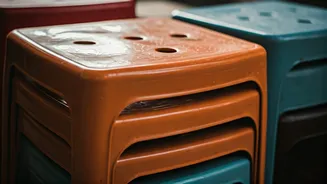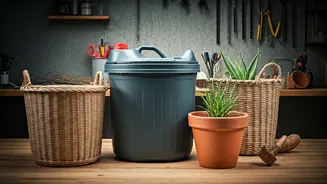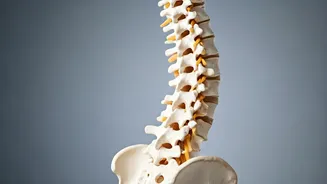Beyond the Jokes
The seemingly simple hole in a plastic stool isn't just a whimsical design element; it’s a purposeful feature with a few practical advantages. While the
idea of it releasing 'fart' air might be funny, the reality is far more functional and scientific. The design is a smart solution that addresses several considerations in manufacturing, handling, and usability. It's about clever engineering that blends form and function, making these stools surprisingly efficient.
Stacking Made Simple
The primary reason for the hole is to prevent a vacuum effect during stacking. Without it, when you try to separate stacked stools, the air gets trapped, creating suction that makes them hard to pull apart. The hole provides an escape route for the air, ensuring that the stools come apart easily. This design feature makes it easier to handle and store a pile of these stools efficiently. This feature demonstrates a thoughtful approach to everyday object design, focusing on ease of use.
Efficient Manufacturing Process
The hole plays a part in the manufacturing process. It helps in the molding of the plastic. The hole allows for the even distribution of plastic, which is very important for a uniform shape. Additionally, these holes enable the plastic to cool more uniformly. Uniform cooling is key to ensuring structural integrity and preventing warping. All these things contribute to the efficiency of the production. These considerations collectively result in a more efficient and cost-effective manufacturing process, and they also contribute to the stool's final durability.
Material Saving Strategy
The presence of the hole is also related to material conservation. By incorporating a hole, manufacturers can use less plastic, which saves resources and reduces the overall cost of production. This is in line with sustainable manufacturing practices, as less material use equates to less waste and a lighter environmental footprint. This seemingly small design detail demonstrates a commitment to cost efficiency and environmental responsibility. This small alteration can have a real impact on the overall sustainability of the manufacturing process.
A Convenient Handle
The hole can double as a handle, making it easier to pick up and carry the stool. The shape and positioning of the hole often create a convenient grip point. This feature is especially handy when moving stools around or carrying them from one place to another. This small design improvement enhances the stool's usability and makes it much more user-friendly. It’s a thoughtful detail that proves how design can be about practicality, in addition to appearance.
Stable Stacking Explained
The hole also plays a subtle role in stabilizing the stacking. Though not the primary function, the hole can contribute to stacking stability by allowing for a more secure interlocking of the stools when piled up. This interlocking effect prevents the stools from sliding and reduces the risk of the stack toppling over. This is helpful during storage and transport. This seemingly secondary effect of the hole further reveals the thoughtfulness behind the design.











